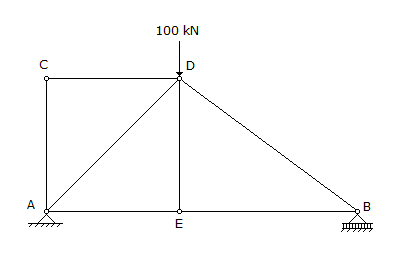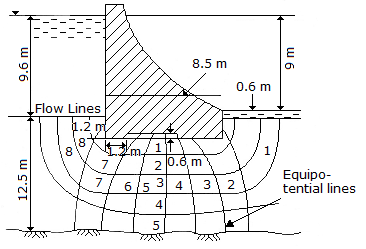Civil Engineering :: GATE Exam Questions
-
The force in the member DE of the truss shown in the below figure is,

-
The degree of static indeterminacy of the rigid frame having two internal hinges as shown in the figure below, is

-
Excessive fluoride in drinking water causes
-
The proposed dam shown in the below figure is 90 m long and coefficient of permeability of the soil is 0.0013 mm/second. The quantity of water (m3) that will be lost per day, by seepage is (rounded to the nearest number):

-
A 1 : 30 model of an ogee spillway crest records an acceleration of 1.3 m/s2 at a certain location. The homologous value of the acceleration in the prototype in m/s2 , is
-
The value of the camber recommended for cement concrete roads in areas of heavy rainfall is :
-
A waste water sample diluted to 100 times with aeration water had an initial dissolved oxygen (DO) of 7.0 mg/l and after 5 days of incubation at 20°C, the DO was zero. The BOD of waste water is :
-
For the strip footing on a saturated clay, for the given failure surface as shown in the below figure, the bearing capacity equation takes the form : (where Cu - undrained shear strength φu - angle of internal friction B - width of strip footing qc - ultimate bearing capacity of soil)

-
A soil mass has coefficients of horizontal and vertical permeability as 9 x 10-7 cm/s and 4 x 10-7 cm/s, respectively. The transformed coefficient of permeability of an equivalent isotropic soil mass is
-
A reinforced concrete wall carrying vertical loads is generally designed as per recommendations given for columns. The ratio of minimum reinforcements in the vertical and horizontal directions is


 Whatsapp
Whatsapp
 Facebook
Facebook

